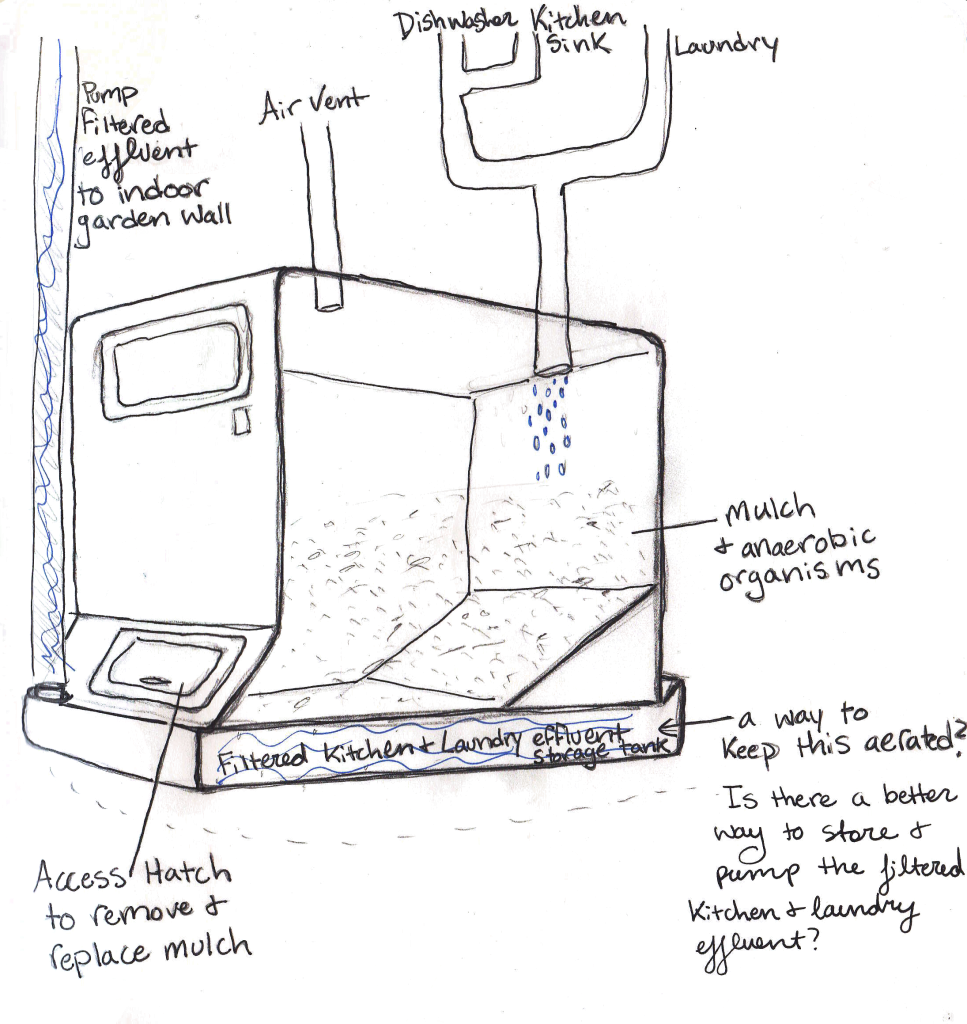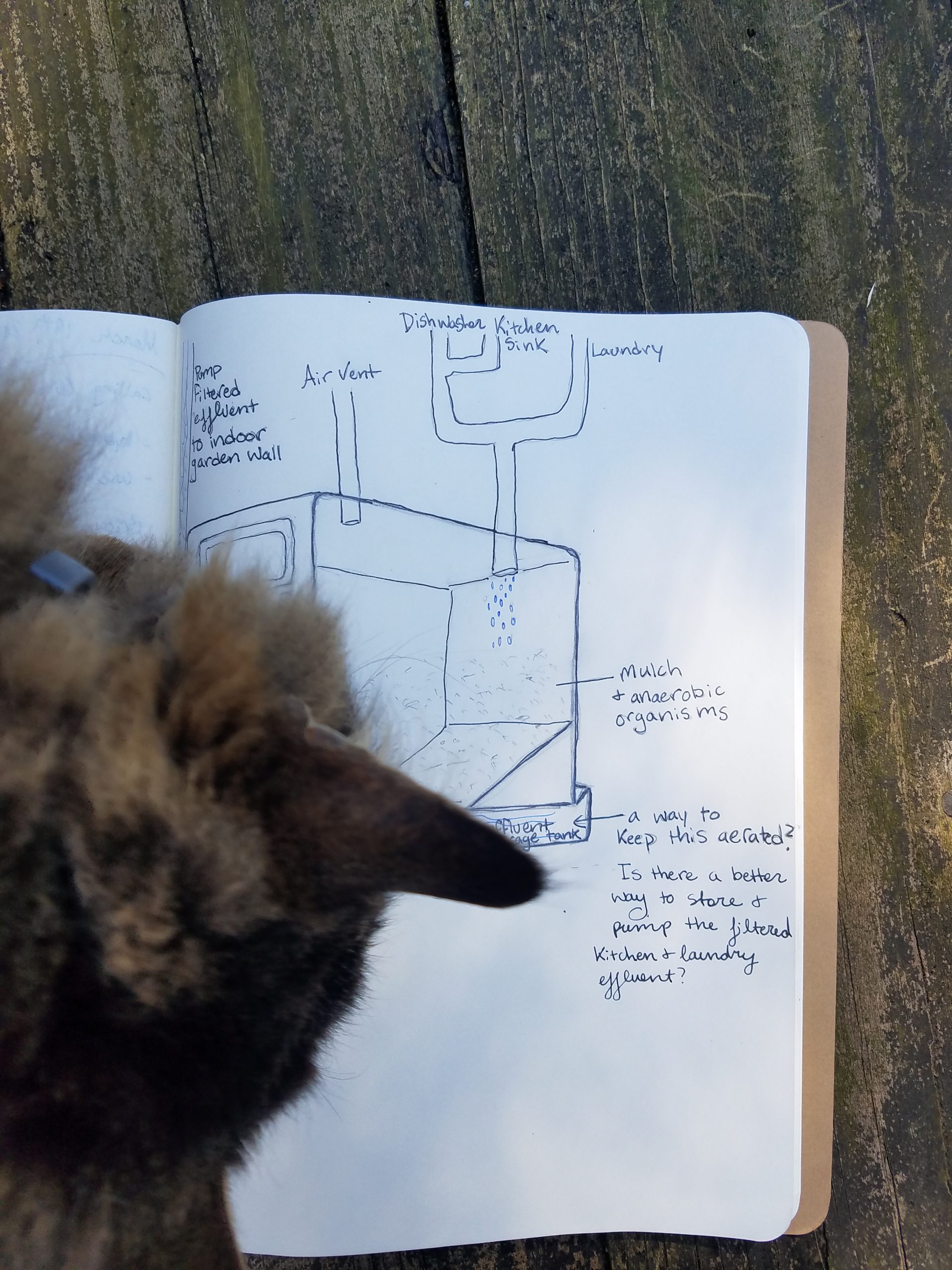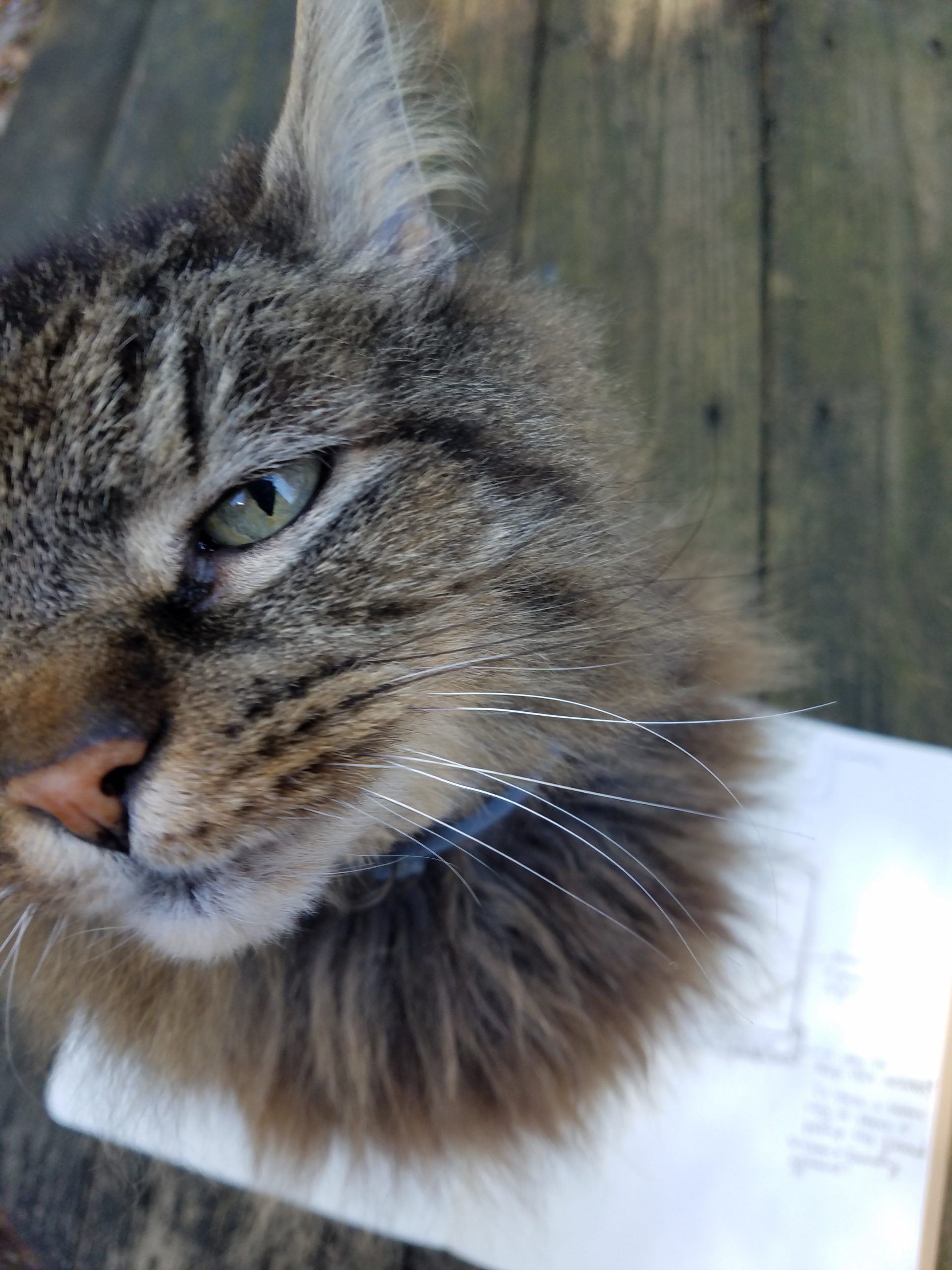An Inclined Mulch Basin
Dear Readers,
This whole mulch basin idea may actually work. Especially if we combine it with the pre-established genius of the Clivus Multrum composting tank design!

Sketch of a Clivus Multrum turned Mulch Basin
How it would work:
Kitchen and laundry wastewater will be directed to an inclined mulch basin. The incline will allow the effluent to gradually and evenly filter through the mulch and to the bottom. This would be an aerated decomposition process, as there will be a constant fan allowing ventilation to the basin, and there will also be aerobic organisms helping to break up and decompose the organic matter (noms..grease!). The water filtered to the bottom of the holding tank will be pumped to the indoor greywater garden wall.
I would like to find a way to aerate the filtered water at the bottom of the holding tank. A way to keep it from becoming stagnant will be helpful.
This entire process will occur below our home, but still within the home’s envelope so to ensure proper function during colder months. The two Clivus Multrum composting toilet systems beneath our home will be maintained the same way~ both contained within the home’s envelope. Remember the blog about The Seed looking like Baba Yaga’s hut? Welp, it may have three chicken legs now instead of two…so I don’t know what fairytale creature/structure it will now resemble…maybe a hodgepodge.
Because we are aiming to achieve Living Building Challenge certification, we will be (and already are..) highly conscientious of what goes down our drains. Anything that could disrupt the filtration processes will be avoided (such as yucky chemicals).
“I looks…I likes….so, I sits.”
See! Bella likes our idea!
While it appears that Bella approves of our inclined mulch basin, it does not necessarily mean PA code will! We could either make our own inclined mulch basin, or we could buy an extra Clivus Multrum composting tank and use it as our mulch basin. Either way, our aerobic treatment of our kitchen and laundry effluent will not be NSF certified. Whatever we handcraft will certainly not have an NSF certification, and if we do go ahead with just buying an extra Clivus Multrum composting tank, the NSF certification is most likely no longer valid by code.1 From what I understand, the NSF certification the tank holds is specifically for its utilization to compost human waste~ Not the filtration of kitchen and laundry water through a bunch of mulch. So, we shall see how that part goes…
However! Because we will be using a contained tank, in our home’s envelope, and then sending that filtered water back up into the house to our indoor greywater garden wall…no wastewater will be disposed of outside. Not having any untreated water discharged directly into the ground or into the waters of “this Commonwealth” is essential to meeting PA Title 25 Code (chapter 73.11, subsection C).2 And, with our intended plan, all of our wastewater will be treated inside. When the greywater garden wall absorbs all of that yummy filtered kitchen and laundry wastewater, and then eventually releases it into the air through transpiration, our ventilation system will send all of the evaporated water outside. No untreated wastewater goes into the soil. Whatsoever. So, there is hope that we will meet code!
Until next time!!
Shelby Aldrich
1. Commonwealth of Pennsylvania. “Title 25- Environmental Protection. Chapter 73- Standards for Onlot Sewage Treatment Facilities, Recycling toilet, incinerating toilet or compostsing toilet, 73.65. Subsection (b).” 31 Oct. 2020. www.pacodeandbulletin.gov/Display/pacode?file=/secure/pacode/data/025/chapter73/s73.65.html&d=reduce. Accessed on 6 April 2021.
2. Commonwealth of Pennsylvania. “Title 25- Environmental Protection. Chapter 73- Standards for Onlot Sewage Treatment Facilities, General Site Location and Absorption Area Requirements, 73.11. Subsection (c).” 31 Oct. 2020. www.pacodeandbulletin.gov/Display/pacode?file=/secure/pacode/data/025/chapter73/s73.11.html&d=reduce. Accessed on 6 April 2021.
© 2020 Sustaining Tree
© 2020 Sustaining Tree




0 Comments